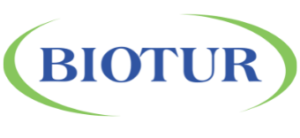Adoption of new technologies in veterinary care
Modern technology is rapidly infiltrating all aspects of healthcare, including the veterinary field. We can no longer offer modern veterinary assistance without bending technology in everything that good practices and excellence mean, whether we are inspired by international practices or establish national principles that put Romanian veterinary medicine on the right track.
From remote monitoring of animal health and behaviour to using artificial intelligence in diagnostics, these innovations promise to transform how animals are treated and cared for completely. We are still far from the widespread adoption of these innovative technologies in Romania. Still, we must be prepared shortly to implement everything that means an advance in veterinary medicine in our country.
Technological trends in veterinary medicine worldwide
As veterinary practitioners understand the benefits, specific innovations and best practices are emerging and implemented.
- Veterinary telemedicine: Clinics and veterinarians worldwide are beginning to use telemedicine to provide remote consultations, optimizing access to care and reducing stress for animals. Granted, we’re just at the beginning here. Still, the sooner we adopt this way of practicing veterinary medicine, the better for the health of pets whose owners can’t get to the vet promptly, regardless of their distress or the urgency of the need and intervention.
- Wearable devices and remote monitoring: Wearable devices allow veterinarians to track animal health in real time, regardless of location.
- Artificial Intelligence and Diagnostics: AI systems help veterinarians identify and diagnose complex conditions with increased accuracy.
What would the implementation of these new technologies entail for Romania
Implementing these technologies and best practices for our country would bring measurable advantages immediately.
- Extended access to veterinary treatments: Telemedicine could open doors for administering veterinary treatments in rural areas of Romania, where access to veterinary clinics may be limited, but also for animal owners who cannot reach the vet for various reasons.
- Improved quality of veterinary diagnosis and treatment: With the help of technology, diagnosis can be more accurate, veterinary treatments more effective, and care more proactive.
- Business opportunities: As technology adoption increases, there is an opportunity for start-ups and investors in Romania to explore and innovate the possibility to innovate and grow in this field.
Challenges and considerations for the implementation of new technologies in pharmaceutical and veterinary practice
- Initial investments – Technology adoption may require a significant initial investment, which may impede many veterinary businesses in Romania. However, there are easily identifiable gains when we look at the long-term benefits.
- Training and Education – If the latest technologies are to be implemented in veterinary medicine, it is essential to ensure that veterinary staff are adequately trained to use these new tools and procedures. Given that schooling, training and everything related to veterinary medical procedures have been done on certain principles and with direct interaction between the veterinarian and the animal, implementing new procedures must be done with proper schooling and training.
- Legislative and regulatory aspects – Another challenge is that Romania will need to review and adjust as much as possible its legislative framework to incorporate these innovations and practices into current procedures. Legislation adapted to the Romanian reality would be welcome and help veterinary practices and distributors understand the opportunity to improve their procedures and come to the aid of pets and animal owners.
As new technologies emerge in veterinary care, Romania is in a favourable position to adopt and innovate. With the right resources, will, and collaboration, the future of veterinary care in Romania could benefit the health of both pets and pet owners.



